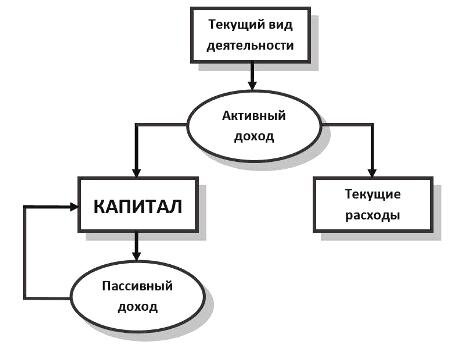Contents
As the mobile app and web-based solutions are becoming responsive, the need for a fluent design is ever more important. The Agile approach to projects is a method that focuses on cooperation and reaction to change. Learn about Agile software development through its definition and values, and explore common methodologies for implementing the Agile approach.
The prototyping model builds prototypes or small replicas of the software to emulate how the final product will behave with all the functioning aspects built to behave as expected. RAD’s development model was first conceived back in the 80s to solve the need of developers looking for a more effective solution than the traditional Waterfall. One of the biggest faults of the Waterfall methodology, and one that most developers complain about, is the complexity to change core functions and software features. In RAD, the development evolution is continuous and flexible to suit changing business needs, which is a must in today’s modern environment. Thanks to this systematic and rigidly standardized approach, Waterfall consists of a series of stages and each one needs to be completed before moving onto the next one, without exceptions. A typical and straightforward Waterfall workflow includes requirements, design, execution, testing, and release.
In the development phase you have to complete the modules step by step without implementing the whole application at a time. Once the one module is completed with testing, finalize it from the client and go to the next module in this way complete your modules, must focus on testing and quality of the product. Once the modules are completed integrate the modules and start final testing.
Why is software needed?
Computer hardware is virtually useless without computer software. Software is the programs that are needed to accomplish the input, processing, output, storage, and control activities of information systems.
The SDLC life cycle process is repeated, with each release adding more functionality until all requirements are met. In this method, every cycle act as the maintenance phase for the previous software release. Modification to the incremental model allows development cycles to overlap. After that subsequent cycle may begin before the previous cycle is complete.
Software Developer
Explore the steps of the agile SDLC model and study its advantages and disadvantages. The hardware and the relevant software required for running the system must be made fully operational before implementation. The conversion is also one of the most critical and expensive activities in the system development life cycle.
On the other hand, removing unnecessary stages provides teams with multiple benefits, such as early system deployment or flexibility to solve unplanned problems down the road. At this stage, the development team identifies critical considerations such as the cost and the necessary requirements to meet the needs identified. Simply put, the planning stage functions as a feasibility study where one of the objectives is to implement the project successfully, while also minimizing risks. It may first be deployed to a limited customer segment to conduct user acceptance testing . The client will collect feedback from the initial users and suggest further enhancements.

Here, the design of the product is transformed into reality by the software developers involved. The design document specification provides a guideline for the source code. The language chosen depends on the type of software being developed, the business use-case among other constraints. The system development life cycle framework provides a sequence of activities for system designers and developers to follow. It consists of a set of steps or phases in which each phase of the SDLC uses the results of the previous one.
Designing the Product Architecture
Conducting a review helps the development team eliminate steps in the development process that did not provide any kind of value at all. Software development life cycle done the right way provides the necessary processes and guidelines in achieving management control and keeping detailed documentation. Since every member of the team receives ample assistance, they tend to be more productive and efficient.
What are the 7 phases of SDLC?
The new seven phases of SDLC include planning, analysis, design, development, testing, implementation, and maintenance.
During this stage, a fix should be implemented so that the resulting product meets the requirements. It provides an effective framework and method to develop software applications. Members of the project can’t move on to the next stage unless the previous one is finished and signed off on by the project manager. At the end of each stage, a formal review is prepared, allowing the project manager to maintain complete management control.
Project Lifecycle
In this method, a prototype of the original system is prepared, tested and sent for the use of the user’s organization. The full model of the system is prepared when final approval is received from the user. In this digital age we live in, it’s baffling how many hycm broker review projects and companies still aren’t adhering to the SDLC process. Most software development initiatives implement a fly-by-night approach–something that often yields low-quality results. Without an actual step-by-step procedure, problems can occur at any stage.
Testing at the end of development may slow down some development teams. ISO/IEC is an international standard for software life-cycle processes. It aims to be the standard that defines all the tasks required for developing and maintaining software. This stage of the software is like a moment of truth as the product is finally released or implemented for the client. The deployment is the actual installation of the product for the client where the software usually goes through User Application Testing.
Atatus is a Full Stack Observability Platform that lets you review problems as if they happened in your application. Instead of guessing why errors happen or asking users for screenshots and log dumps, Atatus lets you replay the session to quickly understand what went wrong. The SDLC provides you with a well-organized and well-documented paper trail of the whole project, complete with records forex news analysis of everything that happens. Defines how customers engage with the software and how it responds to their input. Not simply the programming language, but also the application’s strategies for addressing problems and completing tasks. The ways by which the application can communicate with other assets, such as a central server or other instances of the application, are defined here.
The project workflow only proceeds forward and teams cannot begin one phase before the previous phase ends. However, once a team has passed that phase, they cannot go back to the previous phase. In most cases, testing remains a consistent part of the project throughout the SDLC. Therefore, it is always involved in SDLC in some way or another, regardless of which phase you are currently in.
SDLC Management systems
Coverity SAST- Analyze source code to find security vulnerabilities that make your organization’s applications susceptible to attack. Address security and quality defects in codewhileit is being developed, helping you accelerate development an increase overall security and quality. Additionally, the complexity of the SDLC often causes a project to derail or teams to lose sight of specifics and requirements. Without strict adherence to all aspects of the parameters and design plans, a project can easily miss the mark.
Therefore, the cost of resolving these bugs is minimal when compared to the later stages. Since the testing procedure gets rid of the critical bugs of the software, it makes your end product superior compared to that of your competitors. The SDLC is a continuous process, and thus, consists of several phases. Each of these phases is critical for meeting the requirements of clients and achieving the goals of the project.

The Feasibility Phase is the initial investigation, or brief study of the problem to determine whether the systems project should be pursued. A feasibility study established the context through which the project addresses the requirements expressed in Business Case and investigates the practicality of a proposed solution. The feasibility study is used to determine if the project should get the go-ahead. If the project is to proceed, the feasibility study will produce a project plan and budget estimates for the future stages of development. This stage is usually a subset of all the stages as in the modern SDLC models, the testing activities are mostly involved in all the stages of SDLC.
Project Manager
Usually, organizations prefer to trust system analysts to make that decision and select the best-suited methodology or combination or models. Alleviating software development complexity is chief among the key best practices of developing software. To that end, using the SDLC process goes a long way in compartmentalizing and breaking down robust tasks, into smaller, more manageable tasks that are easier to measure and achieve. Thanks to its framework of structured phases, those involved in the SDLC can help shape the project and manage it in a more streamlined fashion. Performing steps in a development process just for the sake of doing so can waste valuable effort and time.

In such a case, if a problem occurs in any of the previous phases, there is no chance to correct it. But still, this model forms the basis for all other software development life cycle models. Over time, teams that adhere to a software development life cycle will become more effective at determining issues before they even occur. This will help them not only eliminate problems completely but also create better workarounds in case they happen. Compared to a product life cycle , a system development life cycle is used to develop a functional, large-scale business system.
I will suggest you to test your application at every Single Step completion of SDLC as to get best results and quality product. When the design of the application has completed, make it finalized from the client before moving to next step. If it requires some changes, go for them before starting the development phase. The most flexible of the SDLC models, the spiral model is similar to the iterative model in its emphasis on repetition.
What are the Models and Approaches?
Less time is spent in requirement analysis and more emphasis is given on practical feedback from clients after using developed software components. Various SDLC methodologies have been developed to guide the processes involved, including the original SDLC method, the Waterfall model. Other SDLC models include rapid application development , joint application liteforex review development , the fountain model, thespiral model, build and fix, and synchronize-and-stabilize. At the deployment stage of a software development life cycle, a finished product is rolled out in a production environment. It is either released to be downloaded by end-users or installed on the client’s premises and prepared to start running there.
The iterative method, as the name goes, deals with several iterations throughout SDLC cycle. By keeping it like Waterfall, the Iterative approach repeats the method in several stages of development instead of spanning it as whole across entire SDLC. A little too old and rigid, the Waterfall is one of the old-fashioned SDLC models that are not much preferred in modern software development ecosystem. If the software has performed well through all the previous five steps, it comes to this final stage called maintenance.
